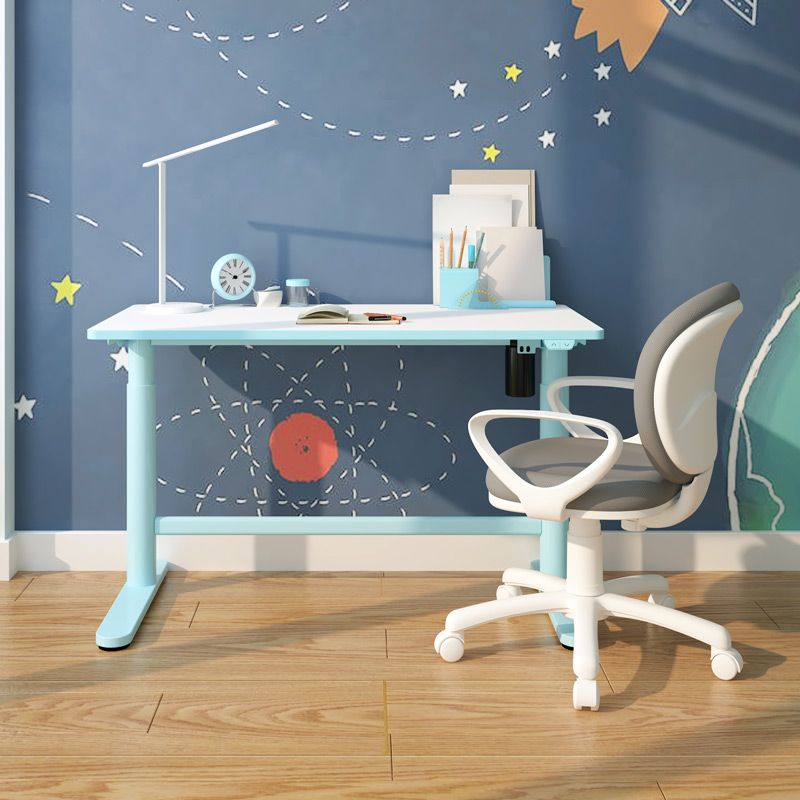Newsflash…children can be picky.
Whether it’s vegetables, water or clothes, it can sometimes be difficult to convince a child that something is good for them - especially when they don’t like or would prefer to do anything else.
Studying is another perfect example that is absolutely vital to a child's evolution, but can often seem boring compared to other, more fun activities. When it’s time to do homework, you might often find your child wandering aimlessly around the house, attempting to scribble in a book while sitting on the stairs, or on the edge of the sofa - or perhaps even behind the sofa.
While it can be difficult to fully explain to a child the importance of good handwriting and competent maths, that doesn’t mean you can’t create an environment that they can do it in and that they will enjoy and which gives them every possibility to thrive in.
Here are 6 ways to create the perfect study area for your child.
1) Choose a setting
This may depend on your child, but also the amount of time you wish to spend supervising them. If your child works well independently, then their own room might be the best place for a study area, which will also allow them to study quietly on their own.
However, for younger children, or less independently-minded studiers, you may wish to have them somewhere more visible, such as the living room or in the kitchen. If this is the case, space may become an issue, but in most cases, you should be able to find enough room.
If you are planning on using one of the family living areas, think about what is close by that might be a distraction. Don’t place the study area in the eye-line of the TV and if possible try and put it in a discreet place that makes the child feel like they are studying in a quiet area, even if it’s somewhere you can still check on frequently.
2) Make it personal
Children love to have something that they can call their own, whether it’s a toy, a book or even somewhere to do their homework. It’s important to stress that this is their area and to involve them in the planning stage if you can. Ask them to choose what colours or designs they would like in their study area and never just assume that you know best.
3) Choose a good desk and chair

Choosing a good desk and chair comes with a dual purpose. It not only provides the child with a dedicated space to sit down and do their homework that’s good for their back and neck, instead of attempting to write while doing a headstand and eating a sandwich at the same time but again, it adds that personal touch and perhaps even makes them feel that little bit older.
Flexispot offers several desks that are perfect for children, with our Kids Desk for Home Schooling and Chair Set our most popular choice. It comes with a height-adjustable waterproof desk and a comfortable advanced elastic mesh chair that provides the perfect setting for that handwriting practice.
4) Organisation
Children and all their ‘things’ can sometimes get a little chaotic. With so many books being used at school, along with stationery and all those strange mementoes that children seem to pick up daily, a study area can quickly become swamped.
It’s important to quickly establish some organisation by placing some drawers or other storage space in or near the study area. Even better, place some small stickers to show what needs to go where. Of course, this will never be perfect, but it’s never too early to learn about keeping things a little neat and tidy.
5) Decorate
And now we come to the exciting part. Ask almost any child if they want to help you decorate and contribute to the choices and they’ll jump at the chance. Again, it’s important to stress that this is their study area which will hopefully encourage them to participate more.
The decorating stage will of course depend a little on where the study area is. If you’ve chosen to place it in the living room, you can’t re-decorate the whole room for the sake of the study area, but you can always put up some pictures or designs around the desk so that your child can see a clear difference between what is the living area and what is their study area.
Ask them to choose some pictures that they want on the walls, or even put up some things that they have done in school. Think about particular academic interests they have and try to decorate with those in mind. Perhaps space, maps, the periodic table or posters of their favourite books.
6) Set the ground rules
When everything is set up and you and your child are happy with the brand new study area, it’s time to lay down some ground rules. We all know how messy a child’s bedroom can get, seemingly in the blink of an eye, and you can bet that a nice clean study area at the start will be no different.
Of course, we’re not suggesting that the child needs to do a full clean each time they’re finished with the study area, but at the very least encourage them to put books, pens and pencils back into their correct place - so it doesn’t look like a bomb has gone off each time they’re finished.